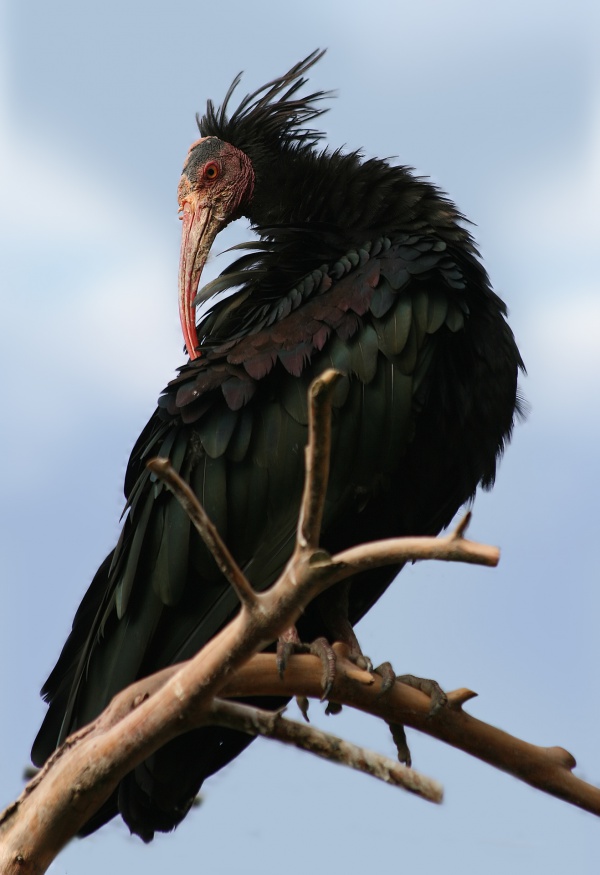Facts About Northern bald ibis
The northern bald ibis, also known as the hermit ibis or waldrapp, is a migratory bird that thrives in barren, semi-desert, or rocky areas near flowing water. This distinctive bird is easily recognizable by its glossy black plumage, unfeathered red face and head, and a long, curved red bill. It typically nests in colonies on coastal or mountainous cliff ledges.
Historically, the northern bald ibis was widespread across the Middle East, northern Africa, and southern and central Europe. However, it vanished from Europe more than 300 years ago. To combat the declining numbers, reintroduction programs have been initiated in various regions, including Turkey, Austria, Italy, Spain, and northern Morocco. These programs have seen some success, helping to stabilize the ibis population.
What sets the northern bald ibis apart from other ibises is its unique breeding and habitat preferences. It chooses cliff ledges for nesting and forages in semi-arid steppes and fallow fields. The species has faced numerous threats, such as hunting, loss of foraging habitat, and pesticide poisoning. Despite these challenges, conservation efforts have been somewhat successful, with around 700 wild birds now found in southern Morocco and fewer than 10 in Syria.
Taxonomically, the northern bald ibis is closely related to the southern bald ibis of southern Africa. Fossil evidence shows that the species has existed for millions of years, with populations diverging in their physical characteristics, ecological roles, and genetic makeup. The northern bald ibis was first described in 1555 and has a fascinating history marked by periods of disappearance and rediscovery.
The northern bald ibis is classified as endangered, with international agreements like the IUCN Red List and CITES working to protect it. Several reintroduction projects in Europe and North Africa aim to boost the population. Zoos also play a crucial role in conservation, with successful breeding programs in captivity.
Efforts in Morocco, Syria, and Turkey have shown promising results, with successful breeding programs and population growth in certain areas. Reintroduction projects in Austria, Spain, and northern Morocco are working to establish new populations and preserve the species. Despite ongoing challenges such as habitat loss and human disturbances, conservation initiatives are making strides toward the recovery and protection of the northern bald ibis.

 Spain
Spain